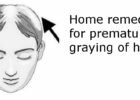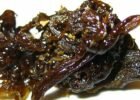When people think of mistletoe, they usually think of an excuse to smooch during the holiday season. However, this semi-parasitic plant has proven to be a lot more useful than just providing a reason for two people to kiss.
What Exactly is Mistletoe?
Mistletoe is a plant that has been used in many different traditions throughout many different cultures. The druids used mistletoe as part of a ritual for the winter solstice, and in the Middle Ages it was hung from ceilings or door frames to ward off evil spirits and to increase fertility. Nowadays it is hung for other reasons, but what about the non-ceremonial components of this plant?
Mistletoe is a parasitic plant that grows on a variety of common tress including apple, oak, pine and elm. Mistletoe extract has been used for centuries as a treatment for many different ailments.
Although it was commonly used to treat a variety of illnesses, recent research has found that mistletoe can be incredibly effective at treating cancer patients.
Mistletoe is one of the most extensively researched plants when it comes to the alternative medicinal treatment of people who have cancer. In fact, in many European countries, mistletoe is used in the creation of some of the most widely prescribed drugs for patients who have cancer. These products include brand names such as Iscador (also called Iscar), Helixor, Iscucin, Lektinol (also called Plenosol) and abnobaVISCUM.
Lab tests of mistletoe extract show that it is able to kill cancer cells and boost the immune system, theoretically making it one of the best cancer treatments out there. Lab tests have also shown that extract of mistletoe is able to prevent the growth of tumors by not allowing blood vessels that the tumor needs from developing. Overall, this means that mistletoe can help prevent the spread of cancer cells, help the body fight off cancer by boosting the immune system and killing these cancer cells once they are formed. Sounds pretty amazing, huh?
Some of the ingredients present in mistletoe that are said to have anti-cancer properties are alkaloids, viscotoxins, polysaccharides and lectins.
There have been over 50 clinical trials studying the effects of mistletoe on cancer patients. 43 of these trials resulted in an improvement in quality of life for the patients and a reduction in psychological distress, fatigue, nausea and depression.
Many tests have also been performed in vitro to test mistletoe’s effects on cancer cells.
Many researchers believe that these lab tests and trials prove that mistletoe is an effective treatment for cancer, however tests of mistletoe’s anti-cancerous effects on animals have provided mixed results.
One type of European mistletoe that was used in a 2004 study showed a strong anti-cancer effect on certain type of cancer cells, but no effect on others. Overall, there is a lot of evidence pointing towards mistletoe’s anti-cancer properties, but more research needs to be done to specify this information.
How is it Administered?
Most cancer treatments using mistletoe often use a mistletoe extract. These extracts are then administered by injection under the skin. Some less conventional methods of mistletoe cancer treatment include consuming it orally, intravenously, or by being injected right into the tumor. In most studies, injections were given two to three times a week for varying amounts of time.




